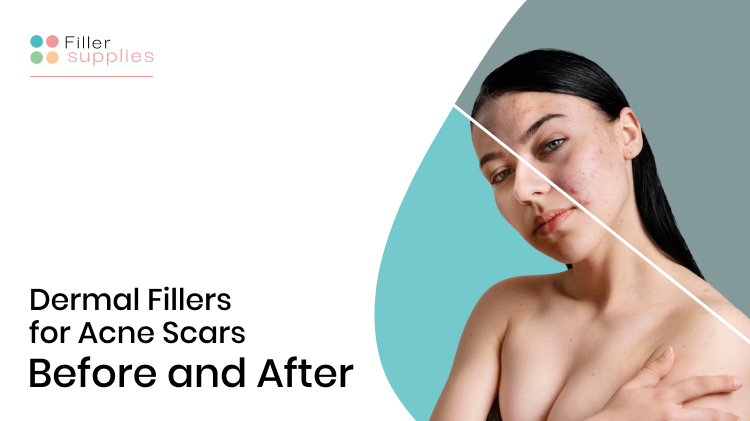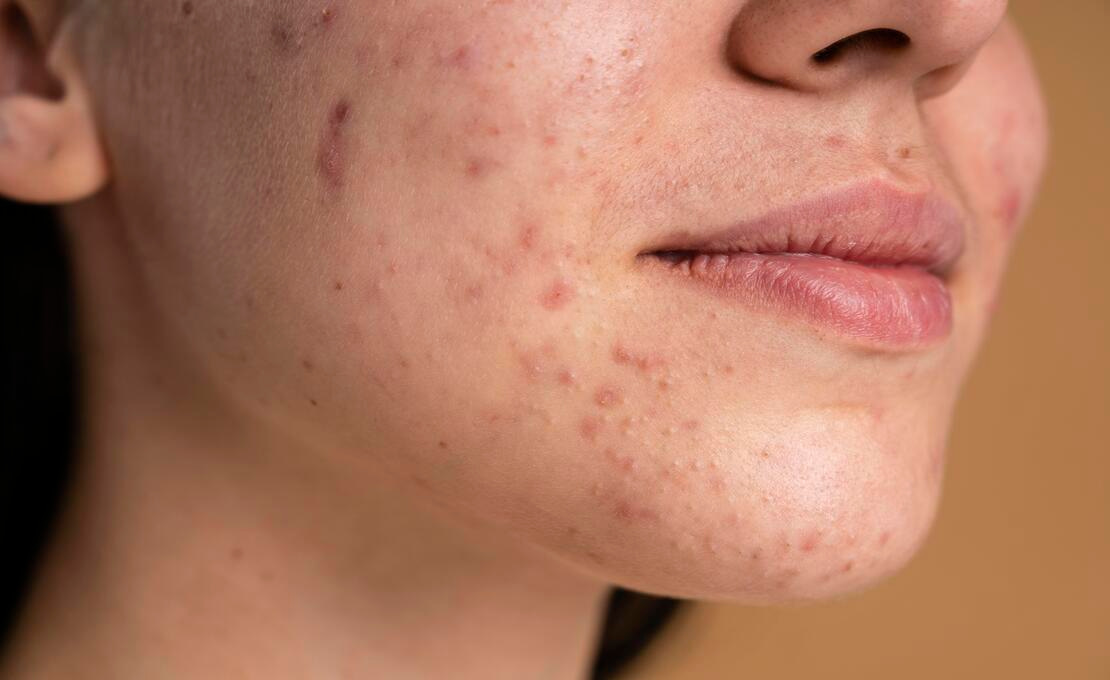Dermal Fillers for Acne Scars Before and After

Dermal fillers definitely belong to the most popular options to boost depressed areas of the face and maintain a youthful, flawless appearance for a long time. However, not many people know that this solution is also suitable for other cosmetic procedures, such as lip augmentation, facial contouring, and treating acne scars. Thanks to the volumizing abilities of these injectables, people may expect a significant improvement with just one injection session.
But what is the right formula for this treatment, and is it suitable for any patient? How to understand that this option is the best for one’s needs? Here, we will shed light on this interesting topic, as acne scar correction is a procedure many people would find helpful. So, without further ado, let’s begin!
Traditional Uses of Dermal Fillers: What Should You Know?
Injectable dermal fillers can fulfill multiple aesthetic goals as their variety and functionality are surprisingly diverse. After choosing the right option among numerous formulations, brands, and active ingredients, the desired effect can be achieved throughout one or more treatment sessions in the doctor’s office.
These procedures can be performed with the help of facial fillers:
- Wrinkles elimination (from mild to deep creases, including nasolabial folds, marionette lines, smile lines, and others);
- Lip augmentation and contouring;
- Lost volume restoration (especially in cheeks and temples);
- Jawline contouring;
- Better hydration of dry skin;
- Post-acne scars removal;
- Neck and hands rejuvenation.
To ensure this treatment is the right call for an individual, it’s vital to visit a doctor’s office and discuss all their aesthetic desires. This way, an injection plan can be created according to one’s body and health peculiarities, cosmetic goals, and other essential factors.
Note that you must be a licensed medical professional to buy dermal fillers online. If used by inexperienced people, facial fillers may be potentially dangerous and cause more harm than good to an individual.
Curious about the duration of Dysport headaches? Look no further! At FillersSupplies, we provide essential insights into this common concern. Discover the answers in our asrticle How Long Does Dysport Headache Last you seek and regain peace of mind.
What Acne Scar Types Are the Most Common?
To understand how to deal with the problem, it’s important to know its core and all essential peculiarities. So, let’s talk more about acne scars’ basic information.
First, you should remember that they can be divided into two categories: atrophic acne scars and hypertrophic scars.
The first type is characterized by the body’s inability to generate enough tissue to fill in the scar; it typically looks like shallow or deep indentations, which are quite easy to recognize. These are the most common, and they can also be divided into three sub-categories:
- Boxcar scars. They are broad and typically have noticeable, defined edges;
- Ice pick scars. These look like small, narrow craters, typically V-shaped. They usually go deep into the skin;
- Rolling scars. This type of scars is typically large and round, with sloppy edges. That’s why they often have a wavy appearance and can rise above the facial surface.
As for hypertrophic scars, they usually vary in color (red or pink) and are thick and raised. The most common reason for their development is excessive collagen production. This acne scars type is more typical for dark-toned skin, as the healing process varies for people with a darker-pigment dermis.
Are Dermal Fillers Effective for Acne Scars?
Dermal fillers are meant to treat skin depressions that affect one’s appearance; thus, it’s a nice option to treat acne scars. However, there are some peculiarities you should know before selecting this procedure.
First, soft tissue fillers are meant to fill in hollow areas, so this product won’t help with raised scars. Also, keep in mind that fillers cannot eliminate scars completely; they can raise the area, add more volume to it, and provide a smoothing effect. Thus, it’s an excellent variant for atrophic facial acne scars like rolling or moderate boxcar scars.
Note that ice pick scars cannot be erased with fillers as they are too severe for this product.
Facial injectables are typically combined with other treatments, like mesotherapy or radiofrequency therapy for better results. Results are immediate and last from 3 months to 5 years, it depends on the filler type selected for the session. Multiple treatments may be required to provide decent improvement, so discuss it with a doctor to work out the best plan to improve one’s looks effectively.
Working Principle
The best way to apply injectable gels is by administering them directly into the depressed region to fill the hollow zone and lift it gently. The results become noticeable almost immediately; on top of that, the biostimulatory abilities of most fillers boost collagen production in the body, increasing the duration of the product’s effect. This process begins gradually (approximately three weeks after the first injection) and improves skin texture and tone over time.
Procedure Protocol
The first and one of the essential steps of dermal filler for atrophic acne scarring is a consultation in a doctor’s office. Treatment procedure protocol, expected results, and available filler options must be discussed to create the scene that would work best for an individual.
Before the administration session, it’s better to avoid medications with blood-thinning abilities, eliminate tretinoin-based products for at least two days, and limit sun exposure (of course, don’t forget about the SPF). This way, the healing process should be easier, and a person shouldn’t experience severe adverse reactions afterward.
As for the session, it usually doesn’t take long and should be finished in thirty minutes to an hour. Topical or local anesthetic is applied to the target area to reduce unpleasant sensations during the gel administration. Afterward, the filler is injected slowly and gently into the target area (multiple syringes with two-for weeks intervals may be required for severe acne scarring). As for aftercare, it’s highly recommended not to sleep face-down, avoid overheated places, and stay in touch with a medical professional in case more severe adverse reactions appear after the administration.
The Best Filler Brands to Treat Acne Scars
Now as we know when dermal fillers are suitable for acne scars treatment, it’s time to dive deeper into all available options people may choose from for the procedure. Of course, the final decision can only be made by a doctor, as they can only define the most suitable option based on a patient’s needs. Here are the most popular fillers for acne scars elimination:
- Radiesse. This calcium hydroxylapatite injectable is an excellent permanent option for individuals who want a durable variant for the procedure. The product remains effective for up to two years and is absorbed by the body later, thanks to its biodegradable abilities. The best thing about Radiesse is that it stimulates collagen production, making the results visible even after the body entirely consumes the product. Plus, the improvement is noticeable immediately, which is also a nice bonus;
- Sculptra. This brand works with a substance called poly-L-lactic acid, which is biodegradable, permanent, and maintains its effectiveness for up to two years (if a higher dose is used, more than three years can be expected). With its help, it’s possible to reinforce skin structure, promote collagen production, noticeably improve atrophic scars, and restore volume in target areas. Another great thing is that Sculptra can be fully reversible with hyaluronidase enzyme if a patient is not satisfied with the effect;
- Juvederm. Juvederm is a hyaluronic acid filler; it’s temporal, and the results from this brand last the shortest if compared with other injectables (from three to twelve months is the average longevity). This variant is available in different forms and formulations, provides a visible improvement, and can even be used for larger areas for severe scarring.
Of course, other brands can be used too, but it must be discussed individually with a doctor to ensure all patient needs are fulfilled.
Discover the truth behind headaches after Botox injections with our comprehensive guide Unmasking the Side Effects: Unraveling the Mystery of a Headache After Botox at Fillersupplies.com. We delve into the often misunderstood side effects that some individuals may experience following Botox treatments, shedding light on the mystery surrounding headaches.
Are There Any Risks Regarding This Procedure?
Typically, the only thing that may be expected after the injection session is local irritation in the injection spot, like redness, swelling, and bruising. They typically fade away entirely within seven-fourteen days and shouldn’t cause too much trouble. However, some unfortunate conditions may happen in oversensitive individuals, and it’s better to inform a doctor about those as soon as possible to avoid unwanted complications:
- Inflammatory reactions. An inflammatory response typically occurs in the treatment site as a reaction to the injectable gel;
- Vascular damage. If dermal filler was incidentally administered into the blood vessel, it could block the blood flow and cause permanent skin damage;
- Filler migration. If displaced, the gel may form hard lumps under the skin, which must be dissolved with a special substance in the doctor’s office.
Dermal Filler Alternatives for Acne Scars
Acne scarring is a problem that may be damaging to one’s self-esteem; most people suffer from this problem, as there are numerous reasons for acne occurrence – from hormonal imbalance to some health problems challenging to take under control. And if dermal filler injections are unsuitable for one’s needs, certain alternatives may be tried in the clinic. We recommend discussing these options with a professional:
- Laser resurfacing. This variant is relatively popular among patients who tried dermabrasion at some point. Individuals with pale skin typically choose it as a procedure to remove scars; the process is not complicated and can be finished quickly based on the request set by an individual. However, keep in mind that it’s not recommended for those with darker skin and a keloids history;
- Radiofrequency therapy. By using a special device, pulsed light targets the area to provide noticeable results without damaging the upper layer of the dermis. As it’s not too intense, a few sessions may be required to see a decent effect;
- Skin needling. For this procedure, a particular device with numerous needles attached is required. A doctor rolls it on one’s face to create tiny punctures and stimulate collagen production in the body. Even though it sounds harsh, the process is totally safe if conducted by a knowledgeable specialist. More than one session is needed for the effect to turn out well;
- Chemical peel. A special solution is applied to the scarred skin to remove the top layer of the dermis, gently eliminating deeper scars. Mild and medium peels should be altered to provide decent improvement; deep peels can only be used once. The skin will need some time to heal after such a procedure, but the end looks worth every moment.
It’s always possible to find an alternative if you want to improve your appearance; the safest way to do it is by talking to a doctor about your goals and hopes. Together, it’s much easier to pick the best way to make your skin smooth and flawless again!
To Sum Up the Discussion
Acne scars are an unfortunate problem that can significantly affect self-esteem and perception. However, dermal filler injections have become increasingly popular in the cosmetic beauty sphere, and it’s an excellent option for treating severe scarring. To ensure this method is right for a person, it’s important to consult a medical professional and consider all the possible options. Hopefully, you found this article helpful!

